How to Soundproof an Open Office
Excessive noise is one of the leading sources of irritation in modern workplaces. Research shows that on average employees lose around 86 minutes each day trying to tune out distractions. As organisations embrace open-plan layouts to foster collaboration and make the most of floor space, acoustic comfort often falls by the wayside.
In this guide, we’ll explore a variety of methods to curb office noise, from architectural tweaks to staff-led practices. By layering these tactics, you can strike the ideal balance between spontaneous interaction and the quiet needed for concentration.
Contents
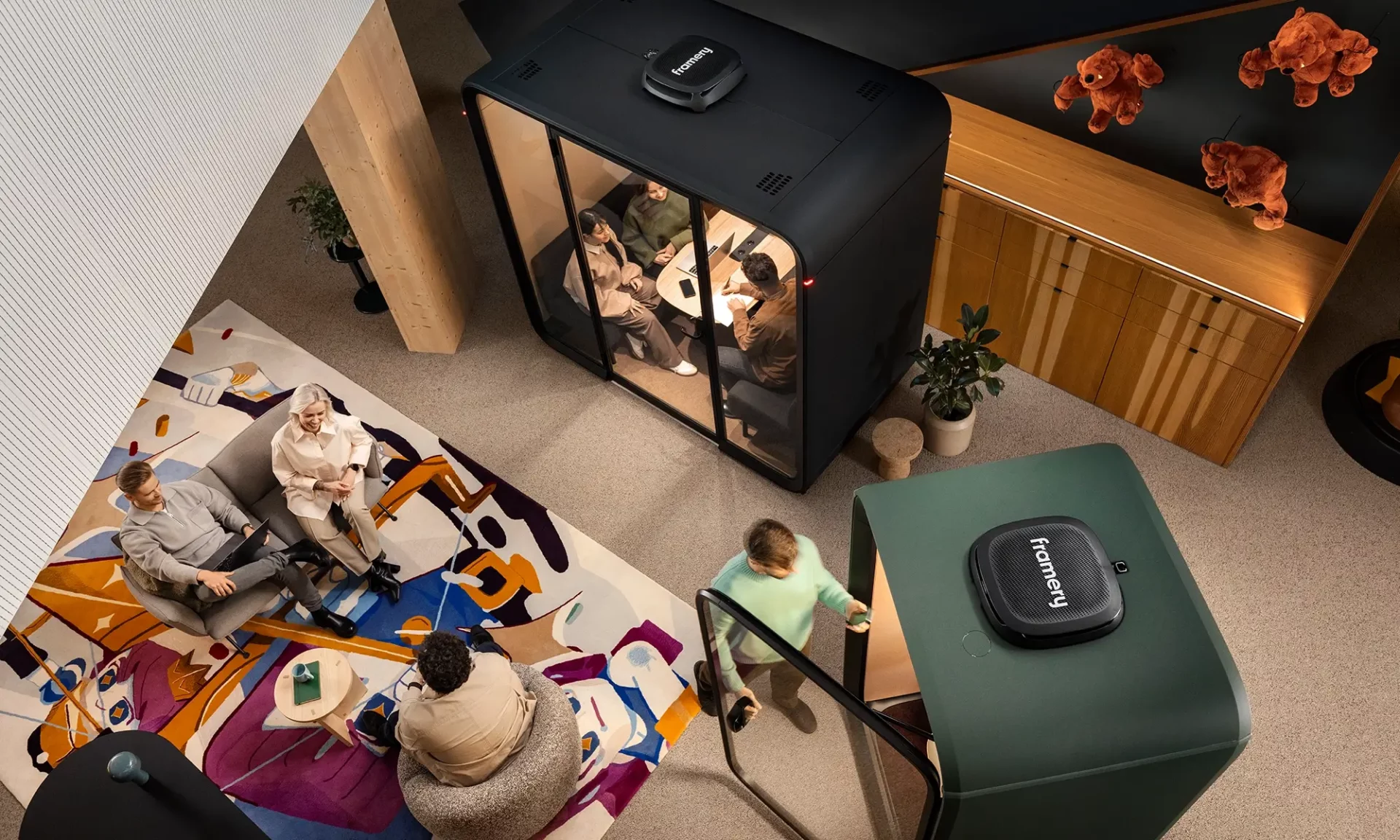
1. What Drives Noise in an Open Office?
Office soundscapes are a complex mix of:
- Colleague chatter (phone calls, impromptu discussions, drop-by questions)
- Machine hum (printers, copiers, HVAC units, computer fans)
- Ambient intrusions (corridor traffic, footfall, external street noise)
Individual tolerance for each sound source varies widely. What one person regards as a productive hum may drive another to distraction. Prolonged exposure to unmanaged noise increases stress hormones, diminishes cognitive performance and can contribute to fatigue over time.
Before implementing solutions, conduct both quantitative and qualitative assessments:
- Use smartphone decibel-meter apps to log peak and average dB levels throughout the day.
- Distribute brief surveys or hold focus groups to gather employees’ subjective feedback on noise hotspots.
- Observe workflow patterns—note when and where spontaneous gatherings or high-traffic periods occur.

2. Structural Enhancements to Absorb Sound
Acoustic Walls & Ceilings
Wall-mounted panels made from melamine foam, recycled PET or wood-wool dramatically reduce reverberation time. Contemporary designs mimic gallery art, blending functionality with brand expression. Ceiling baffles—from perforated metal panels to felt-wrapped geometric shapes—capture sound waves before they sweep across open spans, crucial in high-ceiling areas.
Flooring Treatments
Hard surfaces reflect noise, so introduce carpet tiles (absorbing 30–70% of airborne sound) or dense underlays beneath vinyl or timber. Use runners in corridors and social zones to muffle footfall and chair wheels without a full floor replacement.
Insulation & Barriers
To prevent sound transmission between departments, install high-density acoustic insulation in walls and ceilings. For flexible division, choose freestanding screens or desk dividers made from sound-deadening fabrics. For near-studio isolation, room-within-a-room pods with double-skinned panels and acoustic seals deliver premium performance.
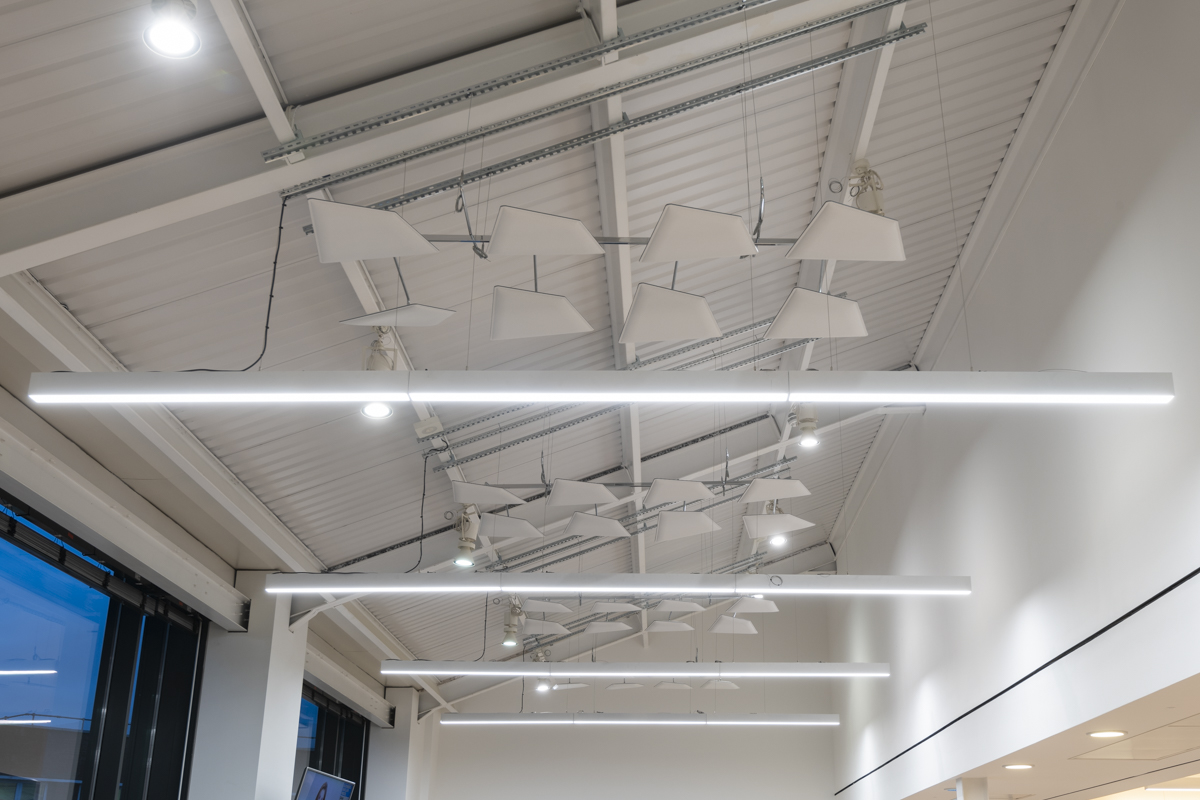
3. Smart Layout and Zoning
Workflow-Driven Space Planning
Begin by mapping activity zones:
– Quiet work (writing, analysis)
– Collaborative tasks (brainstorms, huddles)
– Support functions (reception, printers)
Cluster noisy functions away from focused desks, using buffer zones like storage alcoves or corridors. In our Criteo New York project, sculptural acoustic “trees” both defined lounge areas and improved sound control.
Designated Quiet & Active Zones
Establish enforced “quiet zones” for heads-down work, fitted with premium acoustic treatments. Conversely, allocate “active zones” near meeting pods or break areas to contain conversational noise.
Equipment Hubs
Relocate printers, copiers and shredders into enclosed alcoves. Mount PC towers under desks or in cabinets to reduce fan noise by up to 10 dB at ear level, streamlining workstations and cutting distractions.
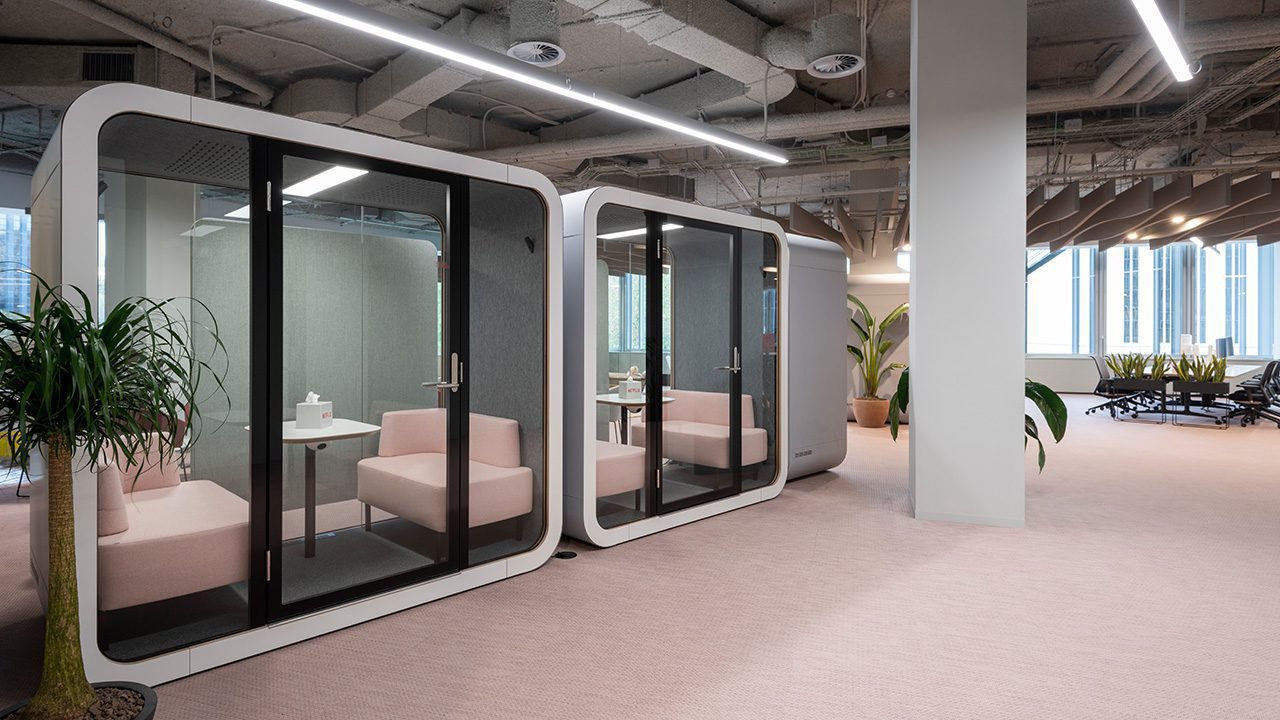
4. Biophilic and Furnishing Solutions
Green Acoustic Buffers
Plants such as Ficus lyrata, Sansevieria and large-leaf Philodendron scatter and absorb sound. Install living walls in reception or breakrooms for both visual impact and echo control.
Soft Furnishings & Modular Furniture
Choose upholstered lounge chairs, fabric-wrapped booths and high-back seating. Modular partitions with textile covers can be reconfigured to break up sightlines and diffuse sound. Open shelving loaded with books or décor also serves as an impromptu sound barrier.
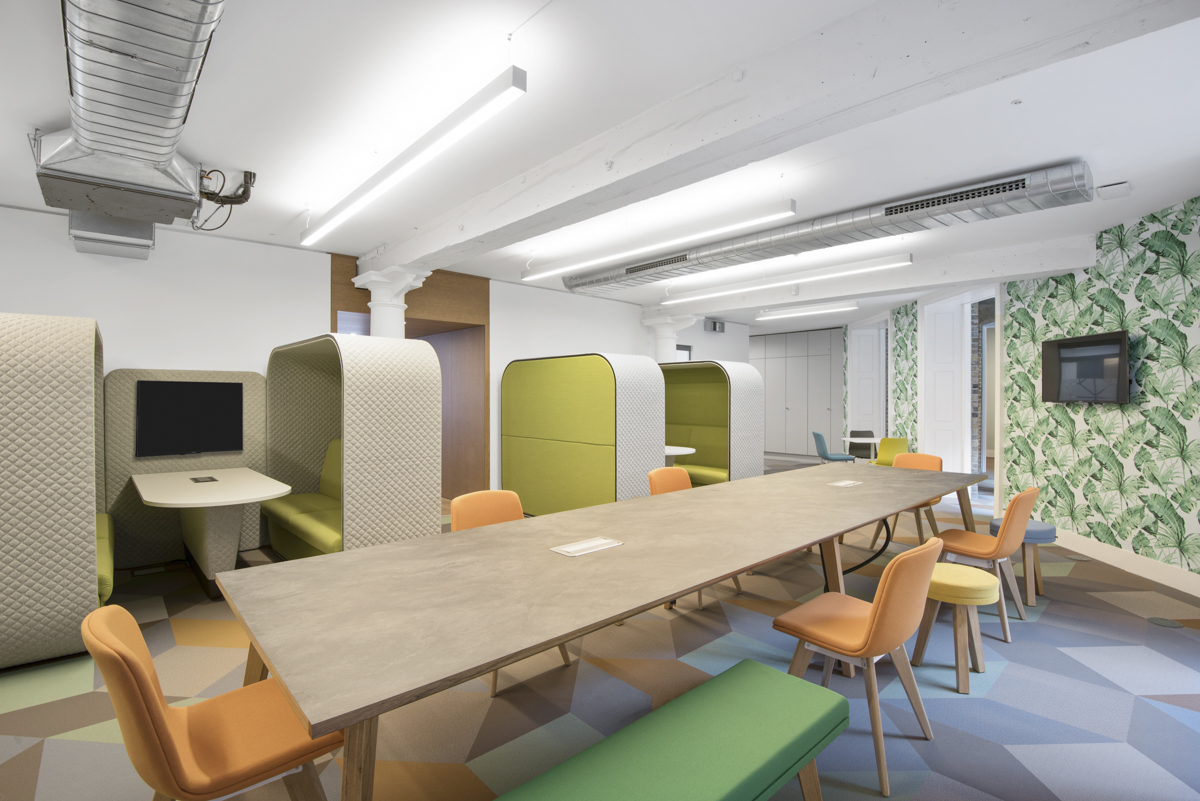
5. Tech Tools for Acoustic Control
Sound Masking Systems
Professional sound masking emits a calibrated “whoosh” noise tailored to speech frequencies, reducing intelligibility up to 70%. Integrated into ceiling grids, these systems offer seamless coverage without visible hardware.
Personal Noise-Cancelling Devices
High-end noise-cancelling headphones provide up to 30 dB of passive isolation. Many companies issue these to knowledge workers as standard equipment, supporting uninterrupted focus in open plans.
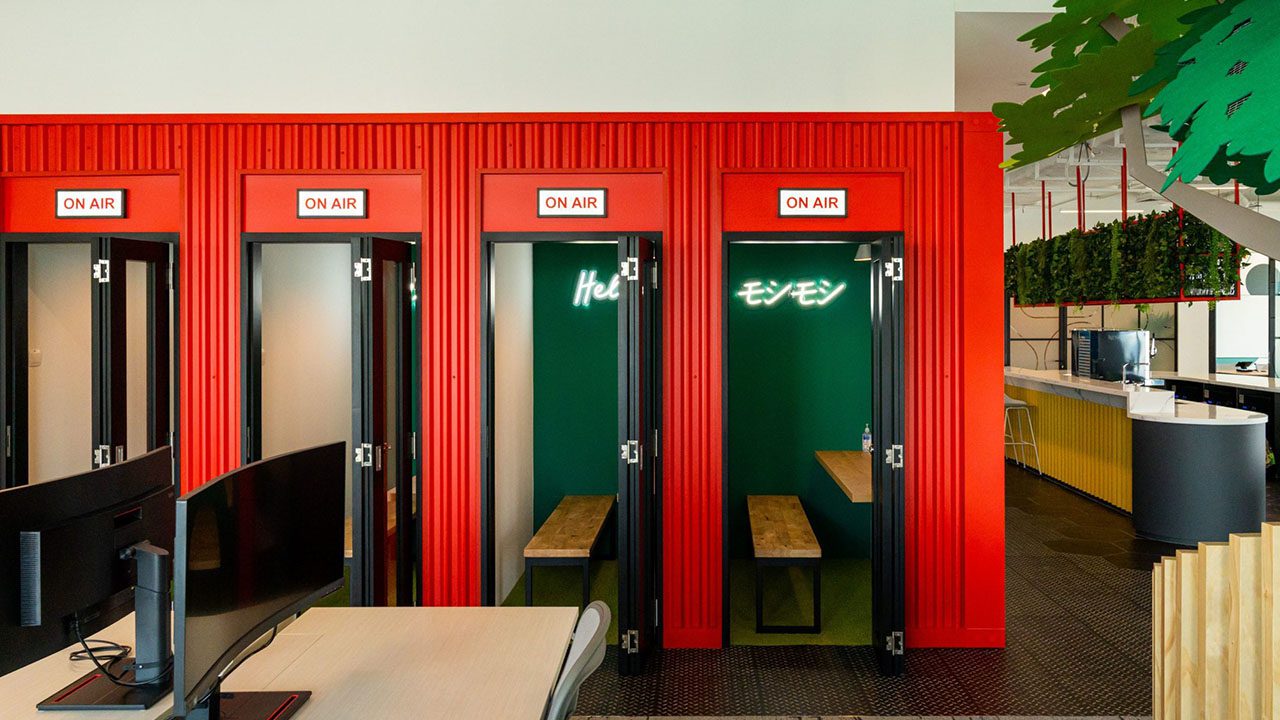
6. Cultivating Quiet Habits
Co-created Noise Etiquette
Host workshops with staff to define “whisper zones,” speakerphone rules and when to relocate animated discussions. Collaborative policy-making ensures buy-in and respect.
Visual Feedback & Signage
Deploy traffic-light noise meters or illustrative posters showing acceptable voice levels. Real-time decibel displays empower teams to self-regulate volume.
Intentional Background Sound
Curate low-volume instrumental or nature soundscapes to mask jarring peaks. Aim for a consistent, non-disruptive backdrop rather than total silence.
Window & Door Treatments
Install heavy drapes on glass walls and acoustic seals on doors. These textile solutions absorb reflections and block external noise without major structural works.
7. Putting It All Together
Every open-plan office has its own acoustic fingerprint. At K2 Space, we combine:
- On-site decibel measurements and acoustic modelling
- Employee surveys and behavioural observations
- Iterative prototyping of high-impact solutions
By phasing quick wins (partitions, headphones) alongside structural upgrades (panels, pods), we deliver measurable improvements with minimal disruption. The outcome is a workspace where sound supports, rather than sabotages, productivity.
8. Office Pods & Booths for Targeted Soundproofing
Office pods and booths offer a turnkey approach to carving private, quiet enclaves within open spaces. From single-occupant phone pods to multi-person meeting cabins, they feature floor-to-ceiling acoustic seals, integrated HVAC and lighting.
Typical cost ranges:
- Phone pods: from £2,500 (basic acoustic shell + ventilation)
- Focus pods: £4,000–£8,000 (ergonomic interior, lighting, HVAC)
- Meeting booths: £10,000–£20,000 (AV integrations, premium upholstery, HVAC)
Lead times vary:
- Off-the-shelf pods: 2–4 weeks
- Bespoke multi-person cabins: 8–12 weeks (custom approvals may extend this)
High-end pods can deliver up to 30 dB of speech reduction. Organisations commonly report a 30–40% drop in ambient noise and see ROI within 12–18 months through enhanced focus and fewer distractions.
If you have any further questions about noise control or bespoke acoustic design, our experts at K2 Space are here to help.
